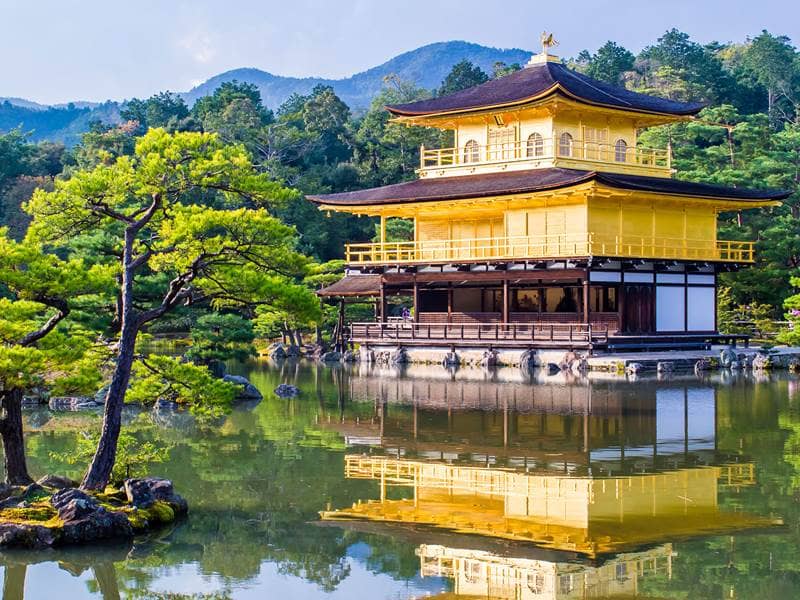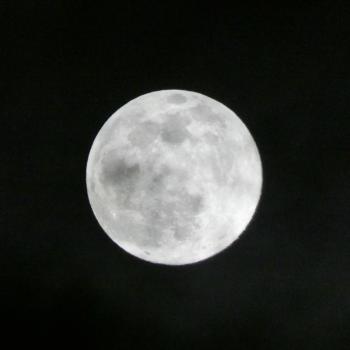
- Trending:
- Pope Francis
- |
- Resurrection
- |
- Trump
- |
- Social Justice
- |
- Peace
- |
- Love
The 100 Most Holy Places On Earth
Kinkaku-ji





Associated Faiths:
Zen Buddhism
Also frequented by Buddhist from other denominations as well
Accessibility:
Visitors can tour the grounds but cannot enter the actual temple.
Annual Visitors: 1,500,000
History
The official name of this Zen Buddhist temple is Rokuon-ji, which means “Deer Garden Temple.” However, because the upper two stories of the temple are coated in a fine gold leafing, the temple is better known by its descriptive nickname, Kinkaku-ji, meaning “Golden Pavilion” Temple. The immaculate gardens combined with the shimmering temple have been said to “evoke paradise on earth.”
Today, the three-story Kinkaku-ji Temple largely serves as shrine in which relics are stored (known as a shariden). On the shrine’s first two floors are various paintings, carvings, and relics associated with one of the buddhas. The top story of the Golden Pavilion is a Zen Buddhist Hall—used for lectures, ceremonies, and other service.
The original structure’s complex (built in 1397 CE) had thirteen buildings and served as a “retirement villa” for Ashikaga Yoshimitsu, a shogun who ruled from 1368 until 1394. Upon his retirement, not only did he refuse to relinquish his powers, but tradition says that he lived in luxury (in his three-story villa) while the residents of Kyōto essentially starved due to a series of disasters, including famine, plague, and a sequence of earthquakes. Thus, upon Yoshimitsu’s unexpected death (at age 50), the villa was converted (by the former shogun’s son) into a Zen temple.
The original temple was destroyed by fire in 1950. A young monk, said to have been a fanatic and perhaps suffering from mental illness, burned down the temple. The current structure was rebuilt in 1955, in the same design as the original. Atop the temple is a bronze gilded phoenix which survived the 1955 fire because it was being repaired at the time the original temple was destroyed. While the phoenix is a common symbol for virtue, harmony, and divine favor, owing to the fire, for many visitors this phoenix atop the temple is a reminder of how the temple rose from its ashes (after arson destroyed it), much as the fabled phoenix does.
Religious Significance
The Kinkaku-ji Temple or “Golden Pavilion” gets its nickname from the fact that its top two stories are covered in gold. Pure Land Buddhism, a sub-denomination of Mahayana Buddhism, perceives gold as a symbol of spiritual purity. When one dies, if one has lived as one should, one enters a “pure land” (or Buddhist paradise) filled with gilded temples or pavilions. As the Buddhist monk, Saeki no Mao—also known posthumously as Kōbō Daishi (“The Grand Master who Propagated the Dharma”)—explained, “There are no fixed heavens and hells. If you do good, gold and silver pavilions immediately appear” when you leave this life. Because of the grandeur of the temple, with its gold leafing and intimate, groomed grounds, one is filled with peace as one traverses the path—and one feels as though he has just entered the paradise of Pure Land Buddhism.
Beyond simply quietly traversing the tranquil grounds surrounding the temple, you will see machines which will grant you a paper fortune. Also, on the grounds, there are statues with a small hole into which visitors attempt to toss coins. If one successfully tosses one’s coin in the hole, one’s wish is supposed to come true. Westerners will take this to be nothing more than superstition, but the number of coins on the ground surrounding these statues suggest that not everyone thinks this is a silly exercise.
As a tourist, you cannot enter the Kinkaku-ji Temple; you can only walk the grounds. Nonetheless, there is a smaller temple designed for visitors who wish to spend some time in contemplation or prayer. While spending a bit of time in one of the structures provides additional “quite” while you pray, truth be told, the entire site is so serene and awe-inspiring, you are most likely to find yourself praying as you walk—no “temple” needed to commune with God on this site!
Some feel closest to God in a temple, a shrine, a cathedral or a church. However, the Rokuon-ji or Golden Pavilion has become a popular place of pilgrimage because it reminds those who visit that—regardless of one’s religion or denomination—nature is one of the places we can all find God. And, in that regard, nearly all visitors to the Kinkaku-ji Temple feel that they are traversing “hallowed” ground.






